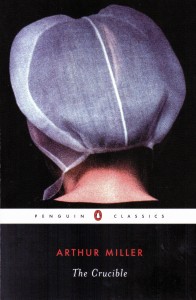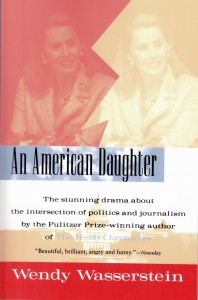Recently, twenty Minnesota judges gathered at the pastoral Gainey Conference Center to participate in the Judicial Decision Making Conference. Also known as the “Literature and the Law” conference, the premise of the session is to read short works of fiction, including some classic works of literature and some-lesser known stories and plays, with an eye to self-discovery and reflection on what it means to be a judge and how one goes about the difficult and sometimes gut-wrenching job of judging others. I’d heard about the conference but when an invitation to attend popped up on my work computer one day, I thought, “What the hell. I’m a writer. I’m a judge. I might as well give it a go.” And so I did.
The seminar was held at the Gainey Conference Center, an estate just outside Owatonna now owned and maintained (superbly, I might add) by the University of St. Thomas. As is my usual custom, I loaded the address into Theresa (my Garmon navigational assistant) and, on Thursday morning at 6:00am, I drove from Duluth to Owatonna. Being the optimist I am, I thought Owatonna was just a tad south of Lakeville; just outside the southern ring of Twin City suburbs. I was wrong. It’s further than I thought. In fact, it’s south of Faribault. But I had plenty of time to make the opening session, which was due to start at 9:30am, until Theresa sent me on a wild goose chase. I swear that I inputted the correct address for the Gainey Center. So I’ll ascribe my late arrrival to the tendencies of women, including electronic surrogates, to get lost. It couldn’t have been me, the male in charge,who made the mistake, could it?
Despite my sidetracked route, I arrived just as each judge was making a brief introduction. And then, the sometimes intense, sometimes humorous, always humbling work of self-reflection and assessment began.
The two major works we read and discussed, included Arthur’s Miller’s astonishingly vivid depiction of the Salem Witch Trials, The Crucible, and a lesser known work by American playwright, Wendy Wasserstein, An American Daughter. The point of the readings (which also included four other pieces of varying lengths) was not to critique or assess story, or character or plot, but to delve into the inner thoughts, emotions, and decision making of the protagonists and minor players with an eye towards tying that conduct to what we, as judges do, every day when we decide cases. There we were: white, black, male, female, Christian, Jew, and agnostic, all seated around a circle of tables, trying to understand the reasons and emotions and driving forces behind our judicial decisions. It was, at least to this judge, cathartic to hear other jurists, some new to the job, but many with more experience than me, express the methodology and basis for what it is they do with the most delicate and important of our fellow citizens affairs: How we reason as we impact liberty, family, and property with our rulings.
For my money, The Crucible by Arthur Miller (1952 and 2003. Penquin. ISBN 978-0-14-243733-9) was the work of the conference. Why? First off, Miller’s attempt to link the McCarthyism of his day to the fear and hysteria of the witch hunts in colonial Salem is spot on. There are also (to a lesser degree) parallels between the mass delusion of Salem in the 1600s to Germany in the 1930s, but the greater and more appropriate link, in my view, is to the American experience during the 1950s when men and women were challenged by “Tail Gunner” Joe regarding their loyalties. The intensity of the play, followed by watching the very fine performances in the 1996 film version of the tale, are haunting and thought-provoking. Especially relevant to the attendees, I believe, is the character of Judge Danforth, the jurist who is bent upon “rooting out Satan” in Salem even if it means the mass execution of innocent men and women. Which, of course, it does. In many ways, reading and watching The Crucible challenges a judge, including this judge, to reflect upon the quality and nature of evidence we hear and see in court and how one’s personal views, political, religious or otherwise, skew perceptions of truth.
Wasserstein’s play, on the other hand, which was included in our readings so as to challenge our judicial noggins regarding religion, gender, and orientation, never really struck a chord with me similar to what I experienced reading The Crucible. An American Daughter (1998. Harcourt Brace. ISBN 0-15-600645-6) is the tale of Dr. Lyssa Dent, a presidential nominee for the post of Surgeon General. Surrounding the privileged and somewhat aloof Dent are her husband, Walter; her father, a United States Senator; and a host of other “interesting” supporting characters. Dent has a secret in her past which threatens to derail her nomination. Patterned after the “Nannygate” scandals of the recent past, the secret is this: When the elitist Lyssa received a summons for jury duty, she tore it up and never served. This seemingly inconsequential act turns out to be the linchpin upon which Dr. Dent’s figurative lynching in the media takes place. The problem with this play is, unlike The Crucible, where there is an abundance of sympathetic victims to pique our interest and outrage at Danfroth’s pompous piety, An American Daughter provides the reader with no such characters with which to empathize. At the conference, I quipped that the play “Reads like a bad episode of Seinfeld.” I think that’s an apt assessment. The problem for me, and I think, for anyone trying to delve into the deeper meanings of Wasserstein’s prose, is that, the thinness of the morality of all concerned blocks any such detailed consideration of motivation or character. The play just didn’t measure up in terms of being a catalyst for serious discussion about what it is we judges do in our professional lives.
Over two days, I was privileged to discuss, break bread, and share laughs with some of Minnesota’s most talented jurists. Some folks who hold the purse strings for judicial education seem to to believe that thoughtful consideration of decision making has no place in judicial education, that, to use a Joe Soucherayism, it is too Mysterian, too “touchy feely” to merit funding and attention. After two days at the bucolic Gainey Conference Center assessing how it is we judge’s think, I heartily disagree. There’s great value in such self-reflection and contemplation, value that cannot be obtained at mainstream “topic-based” legal or judicial seminars. I’ll make the Judicial Decision Making Conference an annual “must” because the opening of a jurist’s eyes is also the opening of a jurist’s soul.
Peace.
Mark





